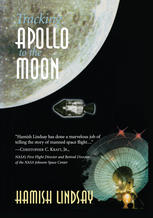

Most ebook files are in PDF format, so you can easily read them using various software such as Foxit Reader or directly on the Google Chrome browser.
Some ebook files are released by publishers in other formats such as .awz, .mobi, .epub, .fb2, etc. You may need to install specific software to read these formats on mobile/PC, such as Calibre.
Please read the tutorial at this link: https://ebookbell.com/faq
We offer FREE conversion to the popular formats you request; however, this may take some time. Therefore, right after payment, please email us, and we will try to provide the service as quickly as possible.
For some exceptional file formats or broken links (if any), please refrain from opening any disputes. Instead, email us first, and we will try to assist within a maximum of 6 hours.
EbookBell Team

4.7
86 reviewsOne of the wonderful aspects of the US Manned Spaceflight Program was the opportunity for people around the entire globe to participate in one of man's greatest adventures. As we laid out the plans for flying the first manned spaceflight program, it was obvious that we would require exten sive operations around the earth. One of the most challenging features of this plan was to build a world-wide network of tracking stations to provide communications with the orbiting spacecraft. At the time, about 1958 and 59, the construction of these facilities, in what turned out to be some very interesting pieces of geography, was a tremendous task. Christopher C. Kroft, Jr. Australia is located roughly 180 degrees longitude from the launch site, Cape Canaveral, and so occupied not only a unique position but a very critical one. Determining the position of the spacecraft as it traversed the Australian continent was critical to the orbit determination. This set of parameters was necessary to properly manage the entire operation. Such things as the time of retrofire, paramount to recovery of the crew, and the information required for signal acquisition at each of the tracking sites around the world are but two examples. Also, because the status of the astronaut and the spaceship were extremely critical to the deci sion-making process, the stations down under provided vital data to evalu ate the progress and to allow the flight control team to manage the problems that inevitably developed.